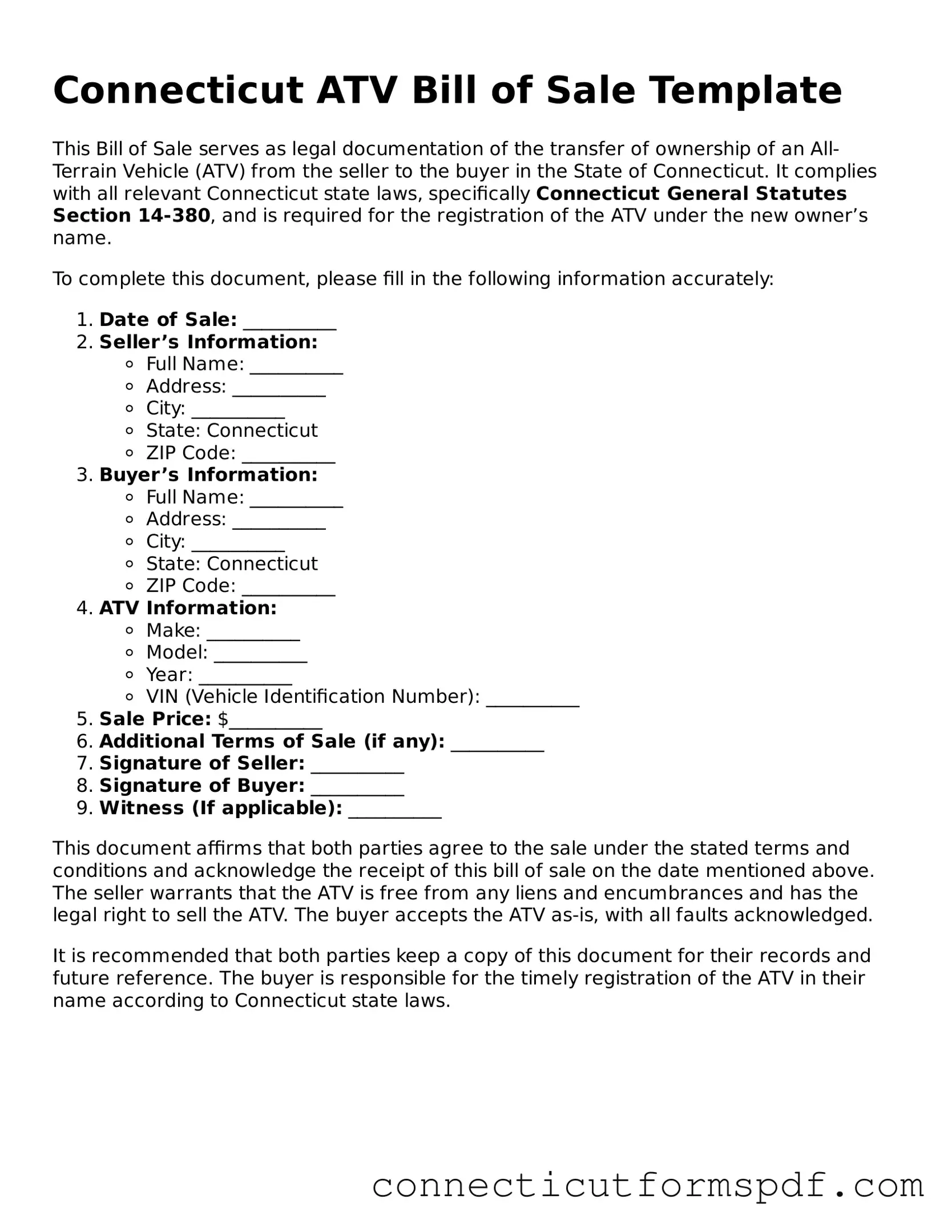The Connecticut ATV Bill of Sale form is similar to other types of vehicular bill of sale forms, in both structure and content. This document, specifically crafted for the sale of all-terrain vehicles within the Connecticut jurisdiction, shares numerous commonalities with these forms, ensuring clarity, legal adherence, and the protection of both the buyer and seller’s interests.
Vehicle Bill of Sale Form: Just like the ATV Bill of Sale, a standard Vehicle Bill of Sale serves as a critical document to finalize the sale of a vehicle. It typically includes vital information such as the make, model, year, and VIN (Vehicle Identification Number), alongside details of the buyer, seller, and the transaction. Both forms are legal documents that act as a receipt and proof of transfer of ownership, requiring signatures from both parties involved.
Boat Bill of Sale Form: Similarly, the Boat Bill of Sale form and the ATV Bill of Sale form share a common structure aimed to facilitate sales transactions. These forms both detail specific information about the vessel or vehicle being sold, including unique identifiers (e.g., hull number for boats, VIN for ATVs), which are crucial for registration and legal purposes. Additionally, they encompass terms of the sale, price, and certification by both parties, certifying the accuracy of the information provided.
Motorcycle Bill of Sale Form: The Motorcycle Bill of Sale aligns closely with the ATV Bill of Sale in terms of layout and required entries. Critical elements such as vehicle specifics (make, model, year, VIN), along with the buyer’s and seller’s information (name, address, signatures), are standard. Both documents serve to affirm the transaction's legitimacy, providing a legally binding agreement that outlines the responsibilities and agreements between the involved parties.
In essence, although tailored to suit the needs of an all-terrain vehicle sale within Connecticut, the ATV Bill of Sale form mirrors the essential functions and features of these vehicular sales documents. These similarities ensure that the process remains standardized and legally compliant, safeguarding the rights and obligations of all parties involved in such sales.
